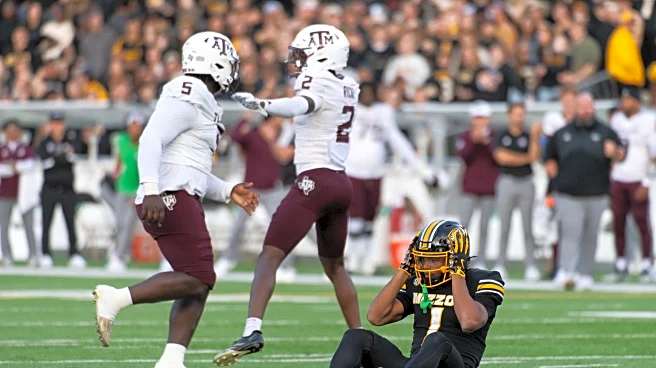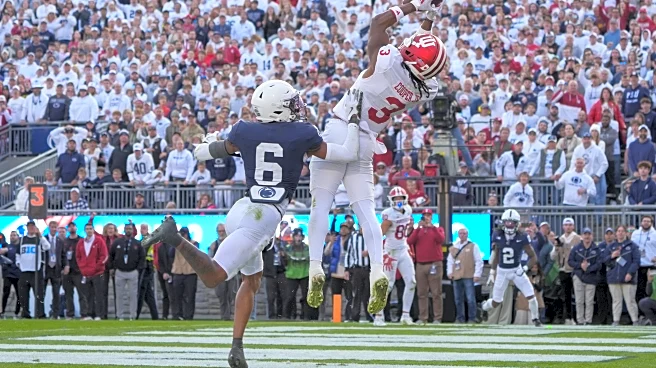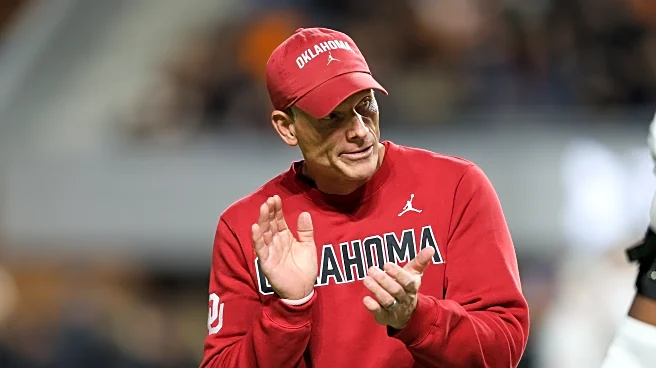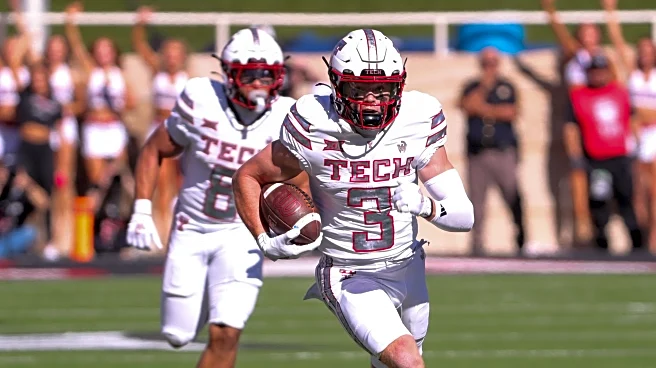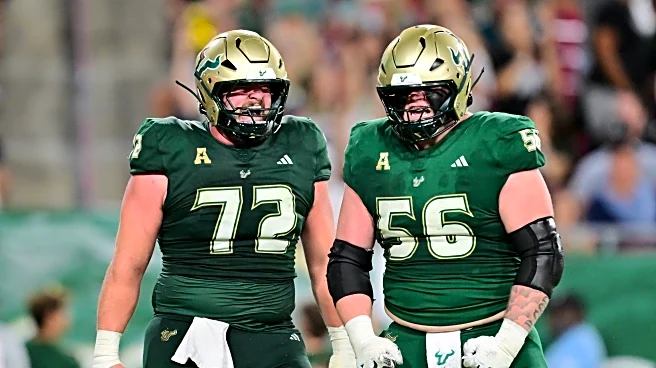What's Happening?
The 2025 Heisman Trophy race has seen a significant shift as several preseason favorites have fallen out of contention. Notable quarterbacks like Arch Manning from Texas and Cade Klubnik from Clemson have struggled
to maintain their early promise, with Manning throwing for 2,123 yards and 18 touchdowns but failing to meet expectations. Meanwhile, unexpected contenders such as Indiana's Fernando Mendoza and Vanderbilt's Diego Pavia have risen in the ranks. Mendoza has led Indiana to an undefeated season, throwing for 2,342 yards and 26 touchdowns, while Pavia has accumulated 3,053 total offensive yards, leading Vanderbilt to a strong season. The Heisman race is now wide open, with new frontrunners emerging as the season progresses.
Why It's Important?
The shift in the Heisman Trophy race highlights the unpredictable nature of college football and the impact of individual performances on team success. The rise of unexpected contenders like Mendoza and Pavia underscores the importance of adaptability and resilience in sports. This development could influence recruitment strategies and the focus on nurturing talent beyond established names. For teams like Indiana and Vanderbilt, having players in the Heisman conversation can boost their national profile and attract more attention from scouts and fans, potentially leading to increased support and investment in their programs.
What's Next?
As the season progresses, the Heisman race will continue to evolve, with upcoming games playing a crucial role in determining the final contenders. Players like Mendoza and Pavia will need to maintain their performance levels to stay in contention. The final weeks of the season, including key matchups against strong opponents, will be critical for these players to solidify their standing. Additionally, the outcome of conference championships and bowl games could further influence the Heisman voting, making every game a potential turning point in the race.
Beyond the Headlines
The unexpected shifts in the Heisman race may lead to broader discussions about the criteria for the award and the emphasis on preseason predictions. It raises questions about the pressure placed on young athletes and the impact of media hype on their performance. This situation also highlights the dynamic nature of sports, where talent can emerge from unexpected places, challenging traditional narratives and expectations.






